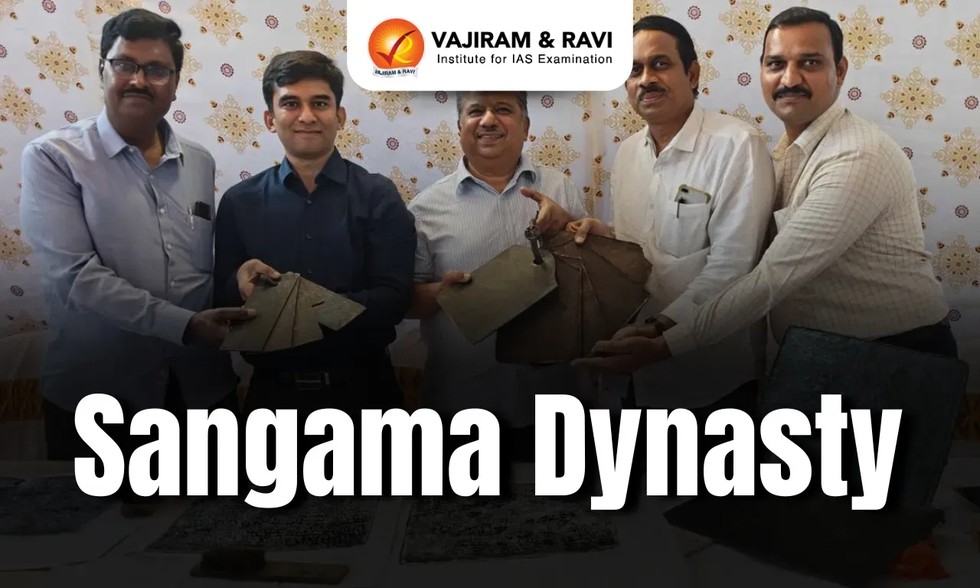
About the Copper Plates
About Sangama Dynasty
Key Rulers of the Sangama Dynasty
|
Ruler |
Key Details |
|
Harihara I (1336-1356) |
- Also known as ‘Hakka’ or ‘Vira Harihara, ’ he was the eldest son of Bhavana Sangama and belonged to the Kuruba clan. - Ruled the northern regions of the Hoysala Empire after the death of Hoysala Veera Ballala III in 1343. - Built a fort at Barkuru on the western coast (Karnataka). - Established the Nayankara system, where military officers (nayakas) were appointed as local governors responsible for estate management and troop mobilisation. - Reorganised the administration with his minister Anantarasa Chikka Udaiya, dividing the empire into sthalas, nidus, and simas, with officials assigned for revenue collection and governance. |
|
Bukka Raya I (1356-1377) |
- Expanded the empire significantly by conquering the Kingdom of Arcot and the Reddis of Kondavidu in 1360. - Shifted the capital from Anegondi to Vijayanagara for better defense. - By 1371, he defeated the Sultanate of Madurai, extending his control to Rameshwaram with military support from his son Kumara Kampana (documented in the Sanskrit text Madura Vijayam). - Engaged in wars with the Bahmani Sultanate, particularly against Mohammed Shah I and Mujahid Shah Bahmani. - Patronised Telugu poet Nachana Soma, as well as Vidyaranya and Sayana, under whose influence commentaries on the Vedas were written. |
|
Harihara II (1377-1406) |
- Expanded the empire towards the eastern seacoast, defeating the Reddis of Kondavidu and securing territory from Nellore to Kalinga. - Captured Belgaum and Goa from the Bahmani Sultanate. - Earned titles such as Vaidikamarga Sthapanacharya and Vedamarga Pravartaka for his contributions to Hindu religious and literary traditions. - Patronised Kannada poet Madhura, a Jaina scholar. |
|
Deva Raya I (1406-1422) |
- Engaged in battles with the Velamas of Telangana, the Bahmani Sultan of Gulbarga, the Reddis of Kondavidu, and the Gajapatis of Kalinga. - Defeated Firoz Shah Bahmani in 1420, gaining control over the Krishna-Tungabhadra doab. - A dam was constructed on the Tungabhadra River and another on the Haridra River to improve water supply. - Modernised the Vijayanagara army by employing Turkic archers, improving the cavalry, and importing Arabian and Persian horses. - He maintained a secular approach in administration, integrating 10,000 Muslims into his army, becoming the first Vijayanagara king to do so. - Foreign Accounts: Italian traveler Nicolo Conti (1420) and Russian merchant Nikitin (author of Voyage to India) visited during his reign. |
|
Deva Raya II (1425-1446) |
- Regarded as the greatest ruler of the Sangama dynasty and an ambitious warrior. - Patronised Kannada poets such as Chamarasa and Kumara Vyasa. - He encouraged Sanskrit and Telugu literary works, with poets like Gunda Dimdima and Kavisarvabhauma Srinatha (author of Haravilasam) at his court. - Earned the title Gajabetegara (Hunter of Elephants). - Persian chronicler Abdur Razzak described Vijayanagara as an empire stretching from Ceylon to Gulbarga and Orissa to Malabar. |